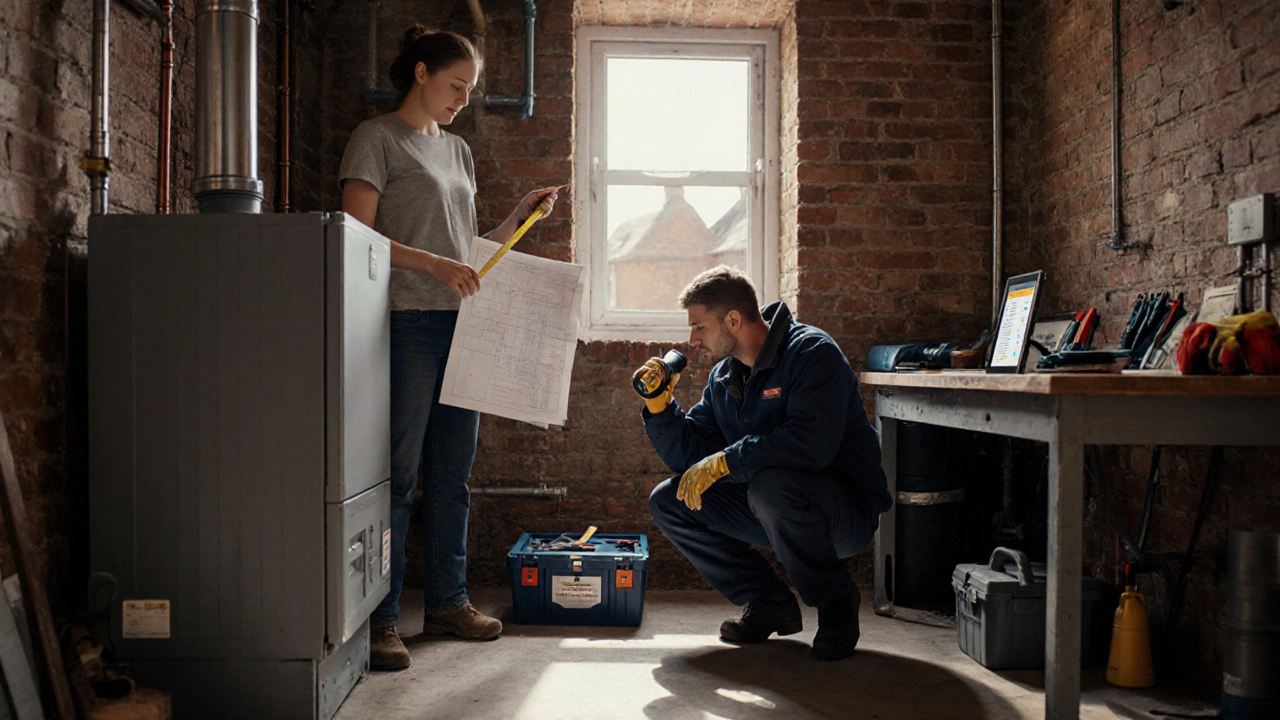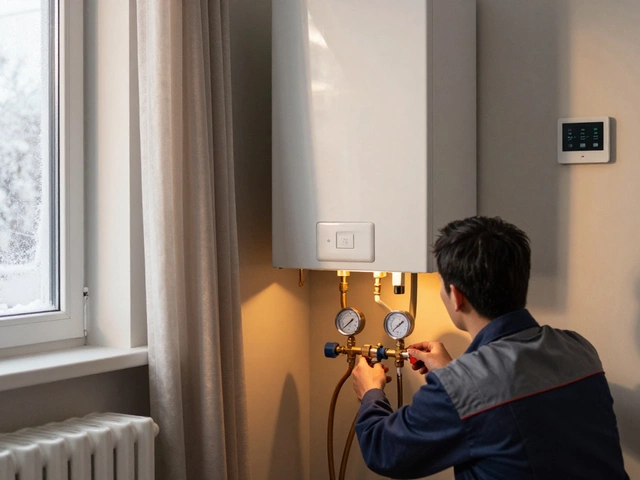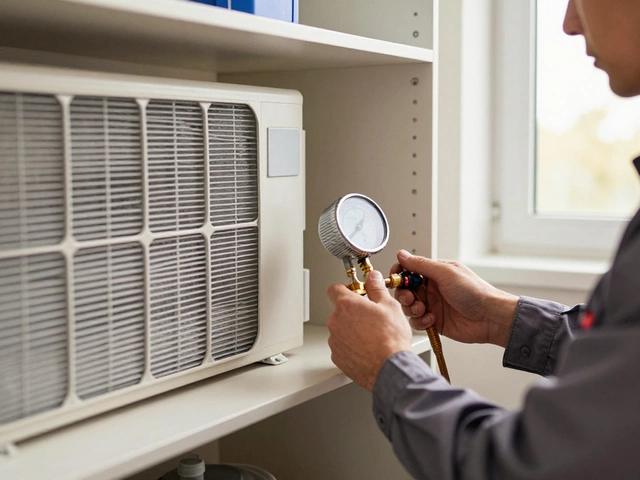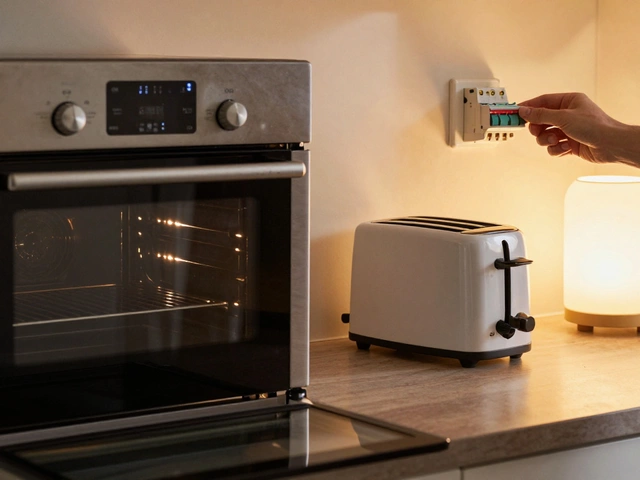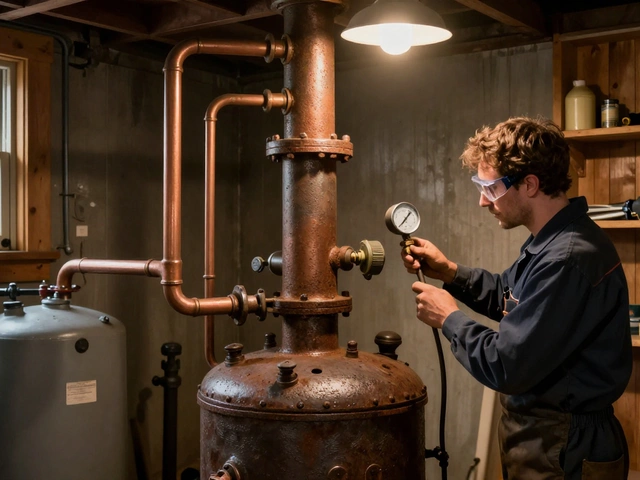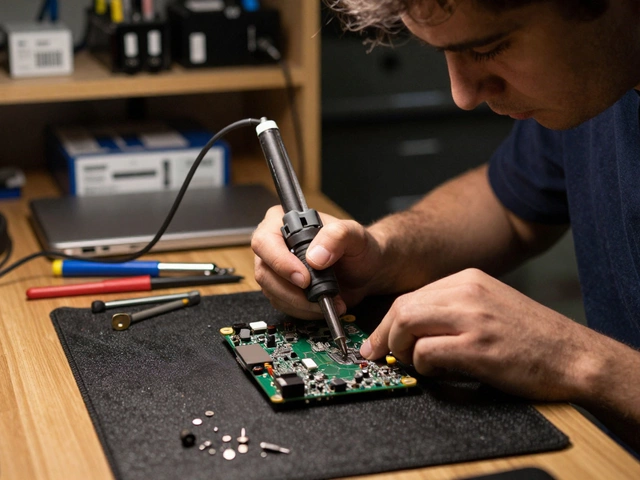Boiler Replacement Time Calculator
Your Boiler Details
Estimated Timeline
Enter your boiler details to see the estimated replacement time.
When you hear people talk about a Boiler is a sealed vessel that heats water or generates steam to provide heating and hot water for a building. Swapping an old unit for a new one feels like a big project, but the actual clock time is often shorter than homeowners expect. Knowing the typical steps, the variables that stretch the schedule, and how to prep your home can turn a vague "a few days" into a concrete plan you can share with your installer.
What Exactly Happens During a Boiler Replacement?
A full boiler replacement includes four core phases:
- Assessment & permitting - The installer checks the current system, measures pipework, and determines whether a building permit or an Energy Performance Certificate (EPC) is needed.
- Removal of the old unit - The old boiler is isolated, drained, and disconnected from gas, oil, or electricity. Heavy‑duty lifting equipment may be used for larger traditional models.
- Installation of the new boiler - The new unit is positioned, connected to the fuel source, linked to the heat exchanger, flue, and domestic hot‑water loop. Modern Condensing boiler units often require a dedicated condensate trap.
- Commissioning & testing - Pressure checks, leak tests, flame‑safety verification, and thermostat calibration are performed before the system is handed back.
Each phase has a typical time range, but the total duration depends on the type of boiler and the condition of the existing infrastructure.
Typical Time Frames for Different Boiler Types
| Boiler Type | Typical Install Time | Complexity Level | Average Cost (USD) |
|---|---|---|---|
| Traditional (non‑condensing) gas boiler | 1-2 days | Medium | $3,200-$4,500 |
| Condensing gas boiler | 1-2 days | Medium | $4,000-$5,500 |
| Oil‑fired boiler | 2-3 days | High | $4,500-$6,500 |
| Electric boiler | 1 day | Low | $2,500-$3,800 |
| System boiler with new pipework | 3-5 days | High | $5,500-$8,200 |
These numbers assume a professional Professional plumber is handling the job and that the house has standard access for tools and material delivery.
Key Factors That Can Lengthen or Shorten the Schedule
- Existing pipe condition - Corroded or undersized pipework may require replacement, adding an extra day or two.
- Fuel type conversion - Switching from oil to gas (or vice‑versa) involves new venting and regulator work, often extending the project by a full day.
- Building permits - Some municipalities demand a permit for new flue installations; waiting for approval can add 1-3 days.
- Location of the boiler - Tight spaces, basement access, or a boiler located in a crawl space can slow down removal and positioning.
- Installer experience - A certified installer with a track record on the specific boiler brand usually finishes faster.
- Seasonal demand - During the heating season, schedules are tighter, and delays are more common.
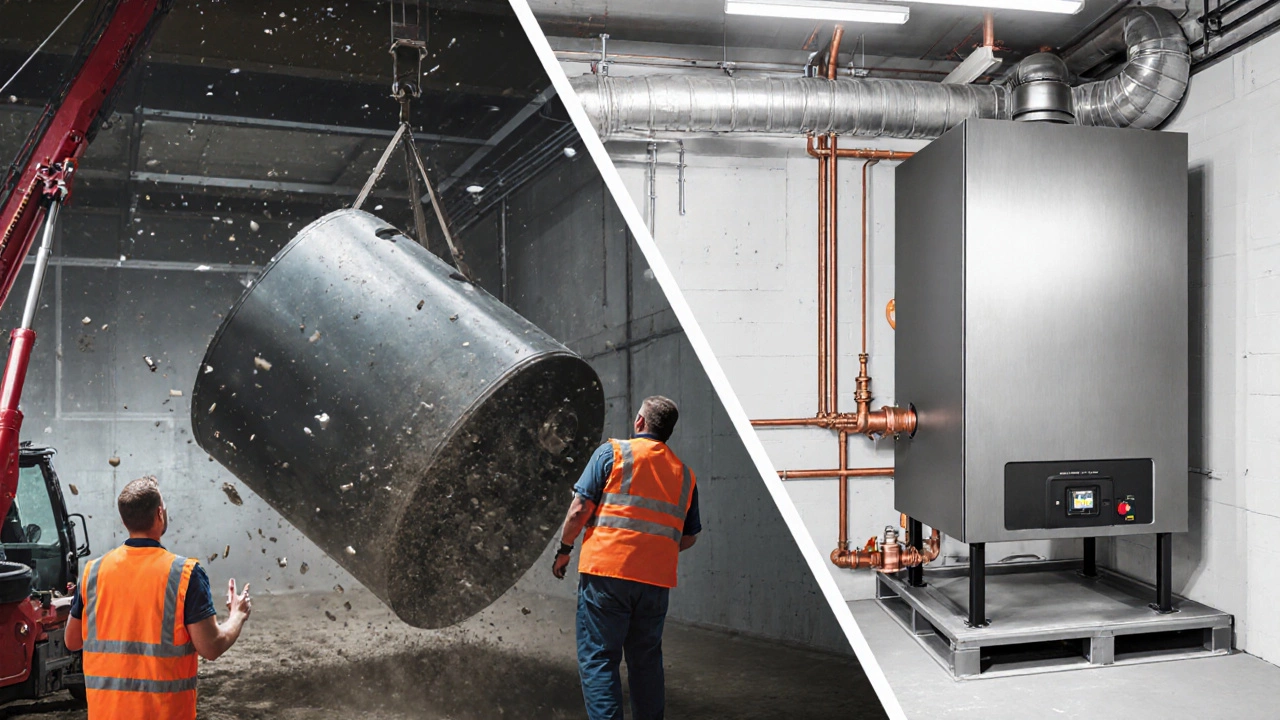
Preparing Your Home to Speed Up the Job
Give yourself a boiler replacement time advantage by tackling these prep tasks before the crew arrives:
- Clear a path from the front door to the boiler room. Move furniture, boxes, and any obstacles that could block a dolly or crane.
- Turn off the main gas, oil, or electricity supply and label the shut‑off valves. This saves the installer time hunting for the right isolation point.
- Make sure a clean water source is available nearby for the pressure‑testing phase. A garden hose can serve as a temporary fill line.
- Gather all relevant paperwork - EPC, previous boiler warranty, and any permit documentation - and place them in an easy‑to‑reach folder.
- Discuss the desired thermostat layout. If you’re adding a new Thermostat or zoning controls, order them in advance.
What the Installer Usually Does From Start to Finish
A typical 2‑day schedule for a standard condensing gas boiler looks like this:
- Day 1 - Morning: Arrive, set up safety barriers, and perform a detailed site survey.
- Day 1 - Midday: Drain the system, disconnect the old boiler, and cap fuel lines.
- Day 1 - Afternoon: Position the new unit, connect flue and condensate pipe, and begin pipework connections.
- Day 2 - Morning: Finish pipework, install the thermostat, and refill the system.
- Day 2 - Midday: Perform pressure, leak, and combustion tests; adjust the fan and gas valve.
- Day 2 - Late Afternoon: Provide a walk‑through, hand over warranty paperwork, and clean up the site.
If any of the “Key Factors” above are in play, the installer will simply extend the relevant day(s) rather than start a new calendar day.
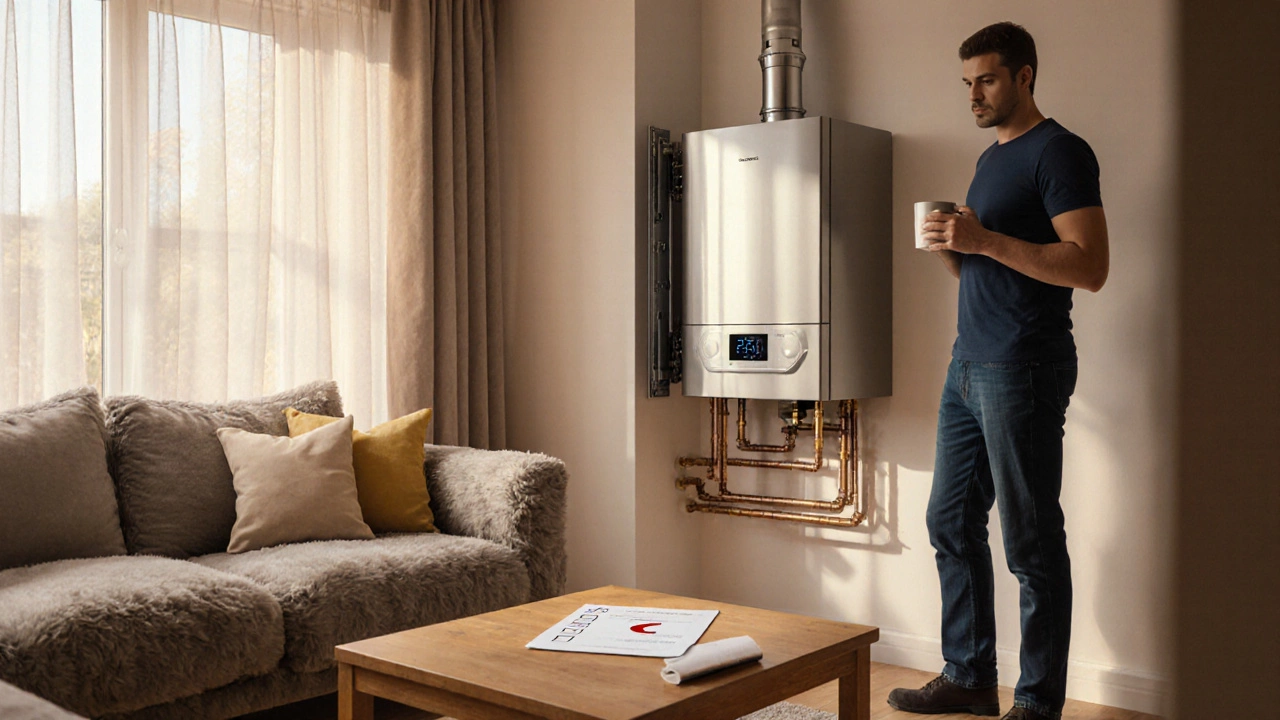
Common Pitfalls and How to Avoid Delays
Even seasoned contractors hit snags when something unexpected shows up. Here’s how to keep the timeline on track:
- Corroded flue - Inspect the old flue before the job. If you spot rust, order a replacement section early.
- Wrong pipe size - Verify the diameter of existing pipework against the new boiler’s specifications. A mismatch means you’ll need adapters or full pipe replacement.
- Unclear ownership of the supply line - Confirm whether the gas supplier or the homeowner is responsible for the mains connection. Miscommunication can stall the gas‑on test.
- Missing permit - Many local councils have an online portal for fast approval. Submit it the week before the scheduled start.
- Insufficient ventilation - Ensure the boiler room meets the required clearance for fresh air; otherwise, you may need to add a vent grille.
Quick Reference: Boiler Replacement Time Cheat Sheet
- Standard gas boiler (traditional or condensing): 1‑2 days.
- Oil boiler: 2‑3 days.
- Electric boiler: 1 day.
- Full system upgrade with new pipework: 3‑5 days.
- Add a new thermostat or zoning control: +0.5 day.
- Permit required: add 1‑3 days for approval.
Keep this cheat sheet handy when you discuss the project with your installer.
Frequently Asked Questions
How many people are needed to replace a boiler?
Most jobs are completed by a two‑person crew: a certified plumber and an apprentice or helper. Larger installations may bring a third specialist for gas or oil line work.
Do I need a new flue when I install a condensing boiler?
Condensing boilers produce condensate that must be drained, so a flue with a built‑in condensate trap is recommended. Existing flues can be reused only if they meet the manufacturer’s clearance and material requirements.
Can I stay in the house while the boiler is being replaced?
Yes, but keep the work area clear and avoid the boiler room during drilling or fuel‑line work. Once the system is commissioned, normal heating resumes.
What is the role of a Heat exchanger in the new boiler?
The heat exchanger transfers heat from the combustion gases to the water circuit. Modern stainless‑steel exchangers improve efficiency and reduce the risk of fouling.
How do I know if my home needs a permit for a boiler swap?
Check with your city’s building department. Generally, any change to the flue size, fuel type, or location of the boiler triggers a permit requirement.
